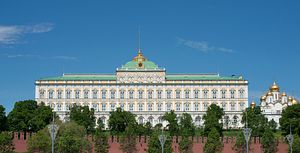Far from being the autarkic fortress some like to fancy it, there’s little secret that Russia’s economic structures rely heavily on non-Russian resources. From carbon export to migrant labor, globalization has coursed through Russia as it has elsewhere. Thus, while Russia continues its slow-motion implosion – largely through its own short-sightedness – collateral damage spreads to those nations that had become reliant on Russian growth.
While, as I’ve argued elsewhere, Russia’s decision to cut the healthiest, high quality options for its citizens offered Central Asia significant market and negotiation leverage, there remains a concurrent reality that these sanctions didn’t come in a vacuum. When Russia hacked off this economic link with North America and the European Union, it was already reeling from tens of billions in capital flight. Toss in a decimated ruble continuing to set record lows and new loan and equipment restrictions from Washington and Brussels, and the Russian economy sags that much more – and those who had pegged their economies to Russia’s well-being suffer alongside.
The European Bank of Reconstruction and Development has attempted to put some numbers on the damage accrued through Russia’s self-flagellating policies, and the West’s continued reprisals. According to the EBRD, while growth “remained quite strong in Central Asia” – thanks both to continued Chinese carbon demand and revenue from extractive industries – it is also “expected to decelerate on account of the region’s strong economic ties with Russia.” There haven’t been any drops from the EBRD’s May growth outlook, but first quarter growth in Central Asia in 2014 was nearly 7 percent lower than that seen in 2013. This slowdown, per the EBRD, was “largely driven by slowdown in Russia, as a result of the Russia-Ukraine crisis.” Likewise, a pair of currencies, the Kazakh tenge and Kyrgyz som, have “experienced sizable depreciations” already in 2014, highlighted by Kazakhstan’s February “Black Tuesday” currency depreciation of nearly 20 percent.
Kazakhstan, which had previously boasted the most dynamic economic outlook in the region, seems especially vulnerable to continued Russian economic myopia. Not only does a weakening ruble continue to threaten Kazakhstan’s economy, but the Moscow-led counter-sanctions also present a significant risk to sustained growth. As one economic analyst told The Astana Times, “Russian counter-sanctions in food products can be expected to, on balance, have an overwhelmingly negative overall impact on Kazakhstan through potential food price inflation and domestic supply risks[.]” It’s small wonder Kazakhstan has been one of the most vocal nations calling for an end to all post-Crimea sanctions.
Moreover, the bank continues, “[c]ountries that rely heavily on Russian remittances are in particular at risk of a sharper economic slowdown should deceleration in Russia deepen.” The bank notes that, for the first time since 2009, remittance rates in Kyrgyzstan and Tajikistan have dropped, to 29 and 49 percent, respectively. With little recourse for compensating those nationals going without work in Russia, political strain grows that much further on Bishkek and Dushanbe – with, for the former, an energy crisis unparalleled in recent history looming.
So long as the ceasefire in Ukraine continues to hold, there remains the possibility of economic stability in much of Central Asia, albeit in a sapped state from where it was at the start of the year. Nonetheless, as the EBRD notes, the “single more important source of risk remains the further escalation of the crisis in Ukraine/Russia[.]” That is to say, as has been the case for the past six months, the greatest risk to Central Asian economies remains the decisions stemming from the Kremlin, and its continued insistence on involvement with Ukraine’s separatists. Not only has Moscow’s decision-making continued to erode its own economic salience, but, for those most dependent on a healthy Russian economy – in Astana, in Bishkek – the fiscal realities of a Russian partnership seem ready to continue their downward trend for the foreseeable future.

































